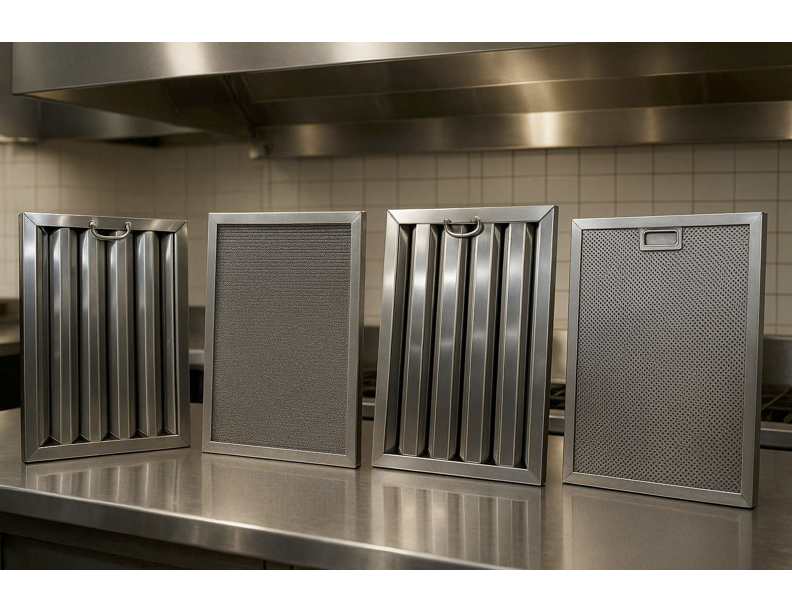If you run a commercial kitchen, you already know that keeping it clean, safe, and up to code is non-negotiable. At the heart of that responsibility lies an often-overlooked piece of equipment: the hood filter. It might seem like a small component, but it plays a critical role in fire prevention, air quality, and overall kitchen efficiency.
Here’s what you need to know about commercial kitchen hood filters — what they do, why they matter, and how to choose and maintain the right ones.
What Do Hood Filters Actually Do?
Hood filters are the first line of defense in your kitchen’s ventilation system. Installed inside the exhaust hood above cooking equipment, they trap grease, smoke, and particulates before they enter the ductwork. This keeps flammable buildup from accumulating in hard-to-clean areas and helps prevent fires.
They also support proper airflow, which is key to controlling heat, odors, and airborne contaminants. Without effective filters, your hood system has to work harder — and that means more energy consumption and higher operating costs.
Types of Hood Filters
Not all filters are created equal. Here's a quick breakdown of the most common types:
1. Baffle Filters
-
Most common in commercial kitchens.
-
Made of stainless steel or aluminum with overlapping baffles.
-
Force grease-laden air to change direction, which causes grease to condense and collect in trays.
-
Pros: Fire-safe, easy to clean, durable.
2. Mesh Filters
-
Made of layers of fine metal mesh.
-
Trap grease using multiple layers.
-
Pros: Lightweight and cheap.
-
Cons: Less fire-resistant, clog quickly, harder to clean.
3. Charcoal Filters
-
Used in hoods that recirculate air rather than venting it outside.
-
Absorb odors and some grease.
-
Not a standalone solution — usually paired with other filters.
4. High-Efficiency Filters
-
Specialized options for operations with heavy smoke or vapor production (like charbroiling or frying).
-
More expensive, but better at protecting your ductwork and improving indoor air quality.
Why Maintenance Is Non-Negotiable
A grease-choked filter isn’t just inefficient — it’s a fire hazard. In fact, many kitchen fires start because of neglected hood systems. Local fire codes and insurance policies typically require regular cleaning and inspection.
Best practices:
-
Daily or weekly cleaning depending on cooking volume.
-
Monthly inspections to catch wear or damage early.
-
Replace filters that are warped, corroded, or permanently clogged.
Don’t forget: stainless steel filters can usually go right into a dishwasher or be cleaned with a degreasing soak.
How to Choose the Right Filter
You can’t just throw in any filter and call it a day. Here’s what to consider:
-
Kitchen workload: More frying and grilling = heavier-duty filters.
-
Hood type and ventilation setup: Know your specs and airflow needs.
-
Compliance: Make sure the filters are UL-listed or meet your local fire code requirements.
-
Ease of cleaning: Stainless steel is your friend for durability and hygiene.
Final Word
Hood filters might be out of sight, but they shouldn’t be out of mind. They keep your kitchen safe, your air clean, and your equipment running smoothly. Cutting corners here can cost you in fines, fire damage, or worse.
Take them seriously — maintain them well — and they’ll quietly do one of the most important jobs in your kitchen.

